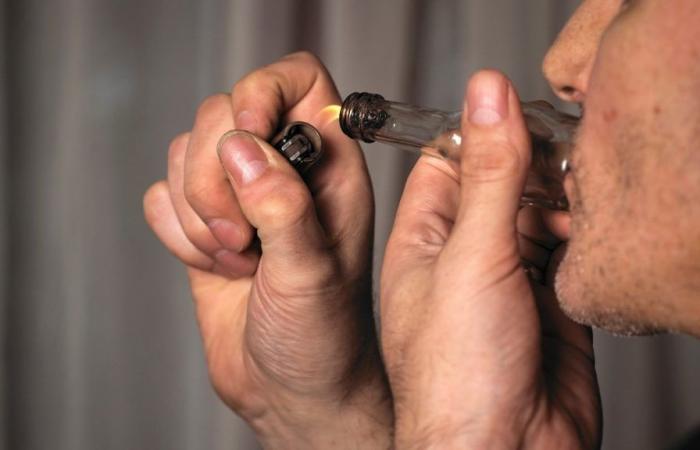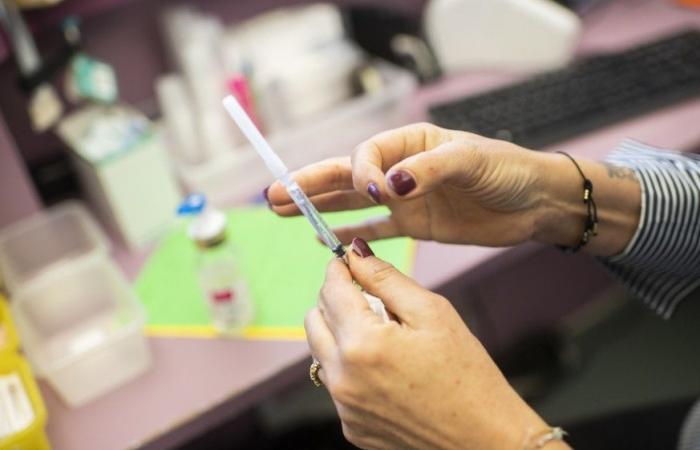At the Arud addiction treatment center, patients are given medical methadone or heroin. For cocaine, however, there is no such alternative.Image: KEYSTONE
Cocaine consumption has increased significantly in Switzerland and crack is even more and more present in public places. Should regulated distribution be established? The response from Philip Bruggmann, addictologist.
Doctor Bruggmann, you are chief physician at the Arud addiction treatment center. For several months, the media have been talking about an increase in cocaine consumption across the country. How dangerous is this practice?
Philip Bruggmann: There are several aspects to take into account. On the one hand, cocaine use is physically harmful and on the other hand, it carries a risk of addiction. The physical consequences are particularly important if you have a history, for example of smoking, or if you are elderly. Quantity also plays a role – the more cocaine you take at one time, the higher the risk of stroke or myocardial infarction.

Philip Bruggmann.Image: zvg
Portrait
Philip Bruggmann specializes in general internal medicine. He has studied extensively the physical consequences of addiction as well as its treatment. He works as co-chief physician of the Arud addiction treatment center, one of the leading institutions in Switzerland, which employs around 130 staff. These treat around 6000 patients. Some have opted for therapy on their own. Others were sent, with their consent, by specialized services, institutions or family doctors.
The media talk about a normalization of cocaine consumption. Is this really the case?
Yes, cocaine has become widespread in recent years. It is increasingly consumed in a festive setting, sometimes with alcohol. Indeed, cocaine cancels out the anaesthetic effect of alcohol and allows you to continue having fun. I also observe a resurgence in crack. But this affects a different social class.
Packages of cocaine float in the Mediterranean, off the coast of Italy.Image: Financial Police
Faced with the situation, the OFSP has already convened two round tables. How is crack cocaine different from cocaine?
Crack is a mixed form of cocaine salt and baking soda. It acts much faster, but also much more briefly. As a result, we always need to replenish and the dosage increases.
“We then enter an infernal spiral”
The negative consequences are multiple: physical, psychological and also social. This is why we notice people who become addicted to crack more quickly, compared to cocaine addicts. Because they quickly find themselves on the street, where they continue to consume. Those who use cocaine, on the other hand, do so in a private setting: at parties, at home or at work.
What are the effects of crack on a daily basis?
As they disappear very quickly, you have to consume again and again doses which continue to increase. Consumers can become aggressive and agitated, which can lead to distressing situations in public spaces.

Crack is a mixed form of cocaine that is smoked. (pretext photo)Image: Shutterstock
What do you think about the regulated distribution of cocaine?
This is a measure that needs to be examined. As far as cocaine is concerned, there is no drug comparable to methadone during the heroin crisis of the 1980s and 1990s, which reliably and safely protects against physical and social harm. At that time, methadone or medical heroin was prescribed. That is how the crisis was brought under control. That is what we need today.
“Unfortunately, solutions always emerge following a problematic situation”
Philip Bruggmann
Experts have long called for studies on cocaine prescription, but it is only now, when the general public understands that something is wrong, that things are starting to move.
You draw a parallel with the greatest drug crisis this country has ever known. People of my generation did not live through that. The current situation is not as precarious, is it?
No, it is not comparable to the Platzspitz era, when consumption was done intravenously and against a backdrop of the HIV crisis. At the time, there were many deaths. The quantity consumed in public spaces was also massive. Today, we are far from it. Despite everything, addiction policy has remained very silent for years and this issue is once again relevant, which is why it is now necessary to make adaptations and reduce the risks.
In the 1980s, Zurich was home to an open drug scene.Image: KEYSTONE
You yourself admit it: drug policy in Switzerland has hardly changed for a long time. So why is there a resurgence?
Over the last fifteen years, cocaine has become a very popular substance. This is because more and more of it is imported, and because it is cheap and therefore more accessible to the general public. In addition, it is a declared illegal substance, the regulation of which is left to the underground market – so we have little influence on it. But it should also be noted that not all people who use cocaine necessarily become addicted, far from it.
Finally, let’s take a look abroad. Drugs have never killed as many people in the United States as today. Opioids like fentanyl are a real scourge there. Why hasn’t it spread here yet?
American trends are arriving here with a time lag of about ten years. Unlike the United States, we have not had a crack problem in Switzerland for a long time.
“We do not know if synthetic opioids like fentanyl will also be marketed here”
Philip Bruggmann
What is certain is that these substances are very powerful and can be life-threatening: for people who have never used them before, but also for those who are already undergoing treatment with opioids. This is why we are preparing for the possibility of a wave of synthetic opioids in Switzerland – we want to prevent by all means that these substances kill people in our country as well. And thanks to the Swiss quality of care in the field of addictions, the effects of a possible wave would never reach the scale of that in North America.
(Translated by Valentine Zenker)









